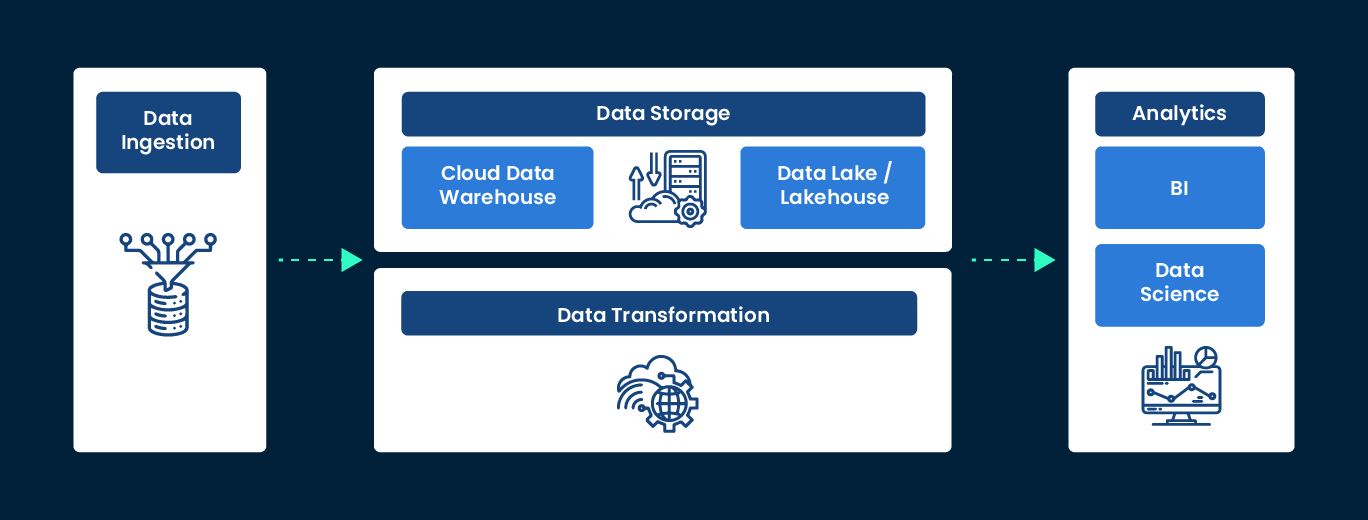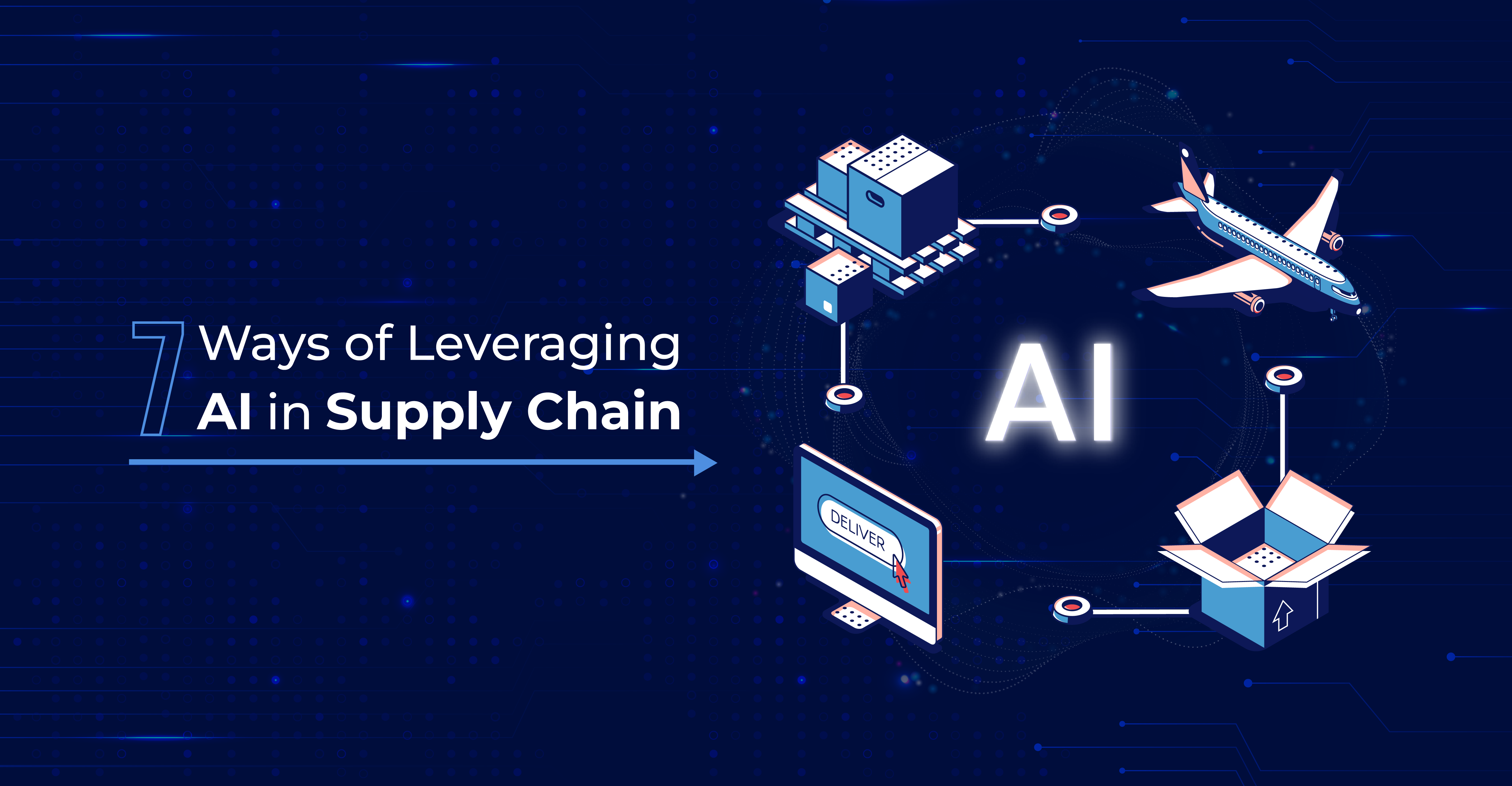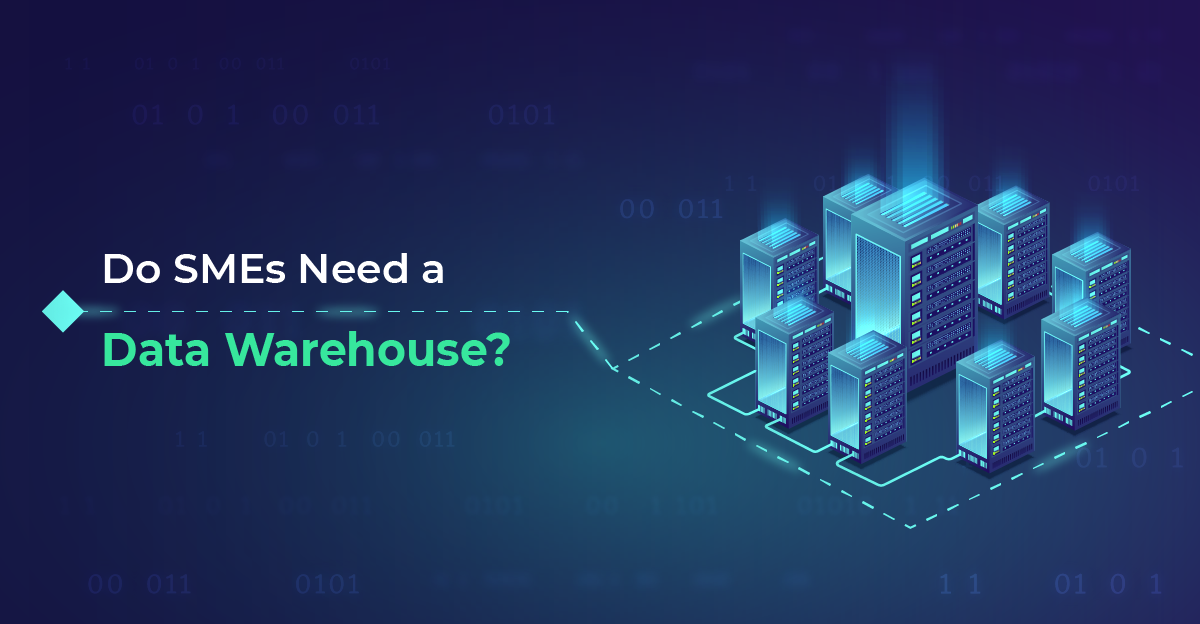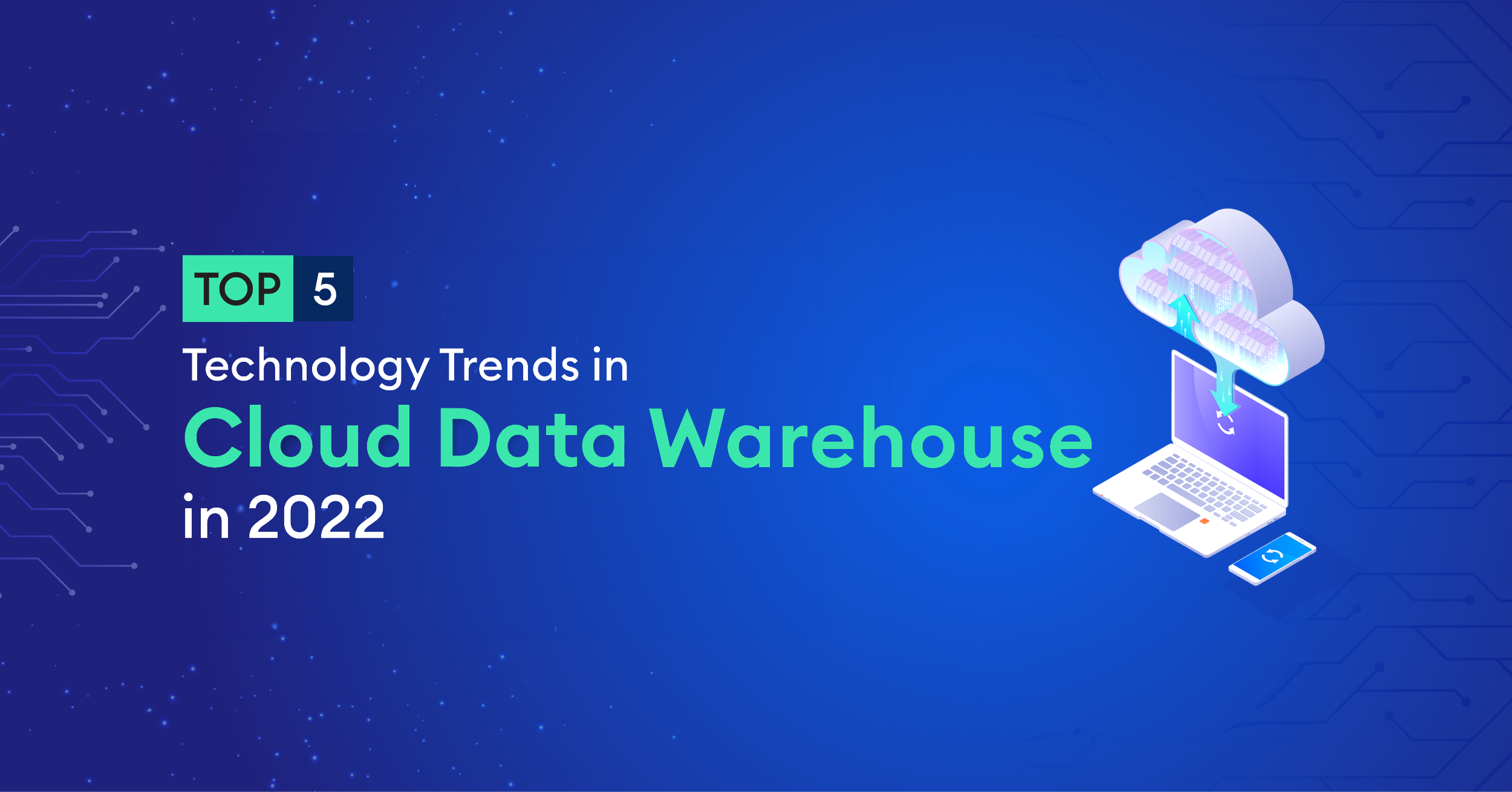The modern data stack has garnered significant attention and is increasingly recognized as a critical trend in data-centric enterprises. Organizations use this prevailing advertisement, ‘we are using modern data stack,’ more than ever for their data products and other campaigns.
Modern stack gained popularity because it is more scalable, flexible, and efficient, providing better access to data professionals than legacy ones. The main benefit of the modern data stack is its capacity to leverage cutting-edge technologies and methodologies, yielding a comprehensive and streamlined approach to data management, analysis, and insights generation, and it powers the most complicated of data pipelines like – machine learning models, real-time production systems, and even client-facing products for end-users.
A modern data stack is a set of tools used to ingest, process, transform, and store data on a cloud-based data platform (like a cloud data warehouse). The stack serves with its robustness, speed, and scalability. Each component in the modern data stack deals with different pieces of the data lifecycle (e.g., data extraction, replication, storage, integration, etc.), but it still is gaining momentum.
Modern data stacks are supported because of these distinct characteristics or capabilities, unlike traditional data stacks:
- Cloud-native (In traditional- On-premise)
- Built around a cloud data warehouse or data lake
- Offered as SaaS or Open-core
- It fits into various architectures & stacks with little or no changes
- Separate storage & compute section (In traditional- both are coupled)
- Used by varied data users like data engineers, data scientists, data analysts, and business analysts.
Modern data stack involves many pieces like ETL tools, transformation tools, BI tools, data warehouses, AI tools, etc. Other tools like databases, data catalogs, governance tools, data orchestration, real-time data flow, etc., can also be added depending on the audience and the need.
What Are Components of Modern Data Stack?
The Modern Data Stack is a set of deployable data integration technologies that may be customized to handle particular business use cases.
It leverages the cloud to store data rather than hardware, as the traditional on-premises data stack does. It functions to manage the use of data within an organization, or more specifically, how to gather, transform, store, model, visualize, and activate data.

The modern data stack is optimally tailored for companies that need to manage large data volumes, are looking to modernize the data stack, and needs to migrate data from legacy systems to your new modern data stack. Previously, this was used only by small enterprises, but as the proliferation of data expands, these small organizations confront formidable data landscapes and can reap dividends from deploying a modern data stack.
A few more significant benefits of modern data stack are covered below.
Why Do Companies Need Leveling Up with A Modern Data Stack?
The following are the benefits of a modern data stack:
- Elevating Technical Productivity: Modern data stack’s tools are created with no code or little code for easier accessibility. This significantly lowers the entry-level technical difficulty.
Thanks to self-service as the primary capability, it decreases the dependencies of data experts, and teams can extract campaign insights independently.
Modern data stacks are a group of applications and cloud data technologies that are designed to speed up the insight-gathering process and enable self-service analytics, controlled data on reliable platforms, and empowered business users, thus elevating technical productivity. - Simplified Data Replication: It is essential to consider new developments in data extraction, replication, and ingestion technology if you frequently deal with “source data changes” that interfere with your data analytics procedures. Modern data stack simplifies the data replication process, copying data so that it is consistent across all physical and virtual locations, boosting availability and accessibility across networks.This stack allows low latency replication, supports replications across different clouds, and will be able to help the process with SQL constructs.
- Data Transformation Made Easier: With a modern data stack, teams can speed up the data transformation process, shorten
development lifecycles, make maintenance more accessible, and bring organizations’ analytics capabilities closer to near real-time. A cloud data warehouse lowers the cost of data engineering task development and maintenance in this new cloud paradigm. - Supports Data Maturity: A modern data stack can serve as a bridge throughout your data journey, from the initial phases to the more advanced stages involving extensive data exploration within an organization and initiatives such as predictive analytics and machine learning.
A business attains data maturity with an organization-wide single source of truth, standardized reporting, and analysts and decision-makers working with real-time or near-real-time data. These businesses can switch from descriptive analytics to diagnostic, predictive, and prescriptive analytics, often in tandem with AI/ML initiatives.
The benefits of modern data stack can be easily witnessed in large businesses or companies dealing with change in data landscapes as it enhances collaboration across different teams and data governance frameworks.
Conclusion:
Future will Entail Domain-driven Data Governance and Data Products.
To create and extract value from data in an organization, domain-driven data management or data governance will be indispensable. This will simplify data sharing both within and between organizations. This is very much applicable to the modern data stack.
This will strengthen the concept of data mesh, which implies data-oriented ownership and decomposition within a domain. The domain members are responsible for ingestion, transformation, and end-user analytics. The incorporation of domain expertise will necessitate the utilization of specialized tools and technologies and the expertise of skilled professionals to execute the operation. Fortunately, a modern data stack has these resources and can facilitate the process seamlessly.
Techment Technology helps organizations modernize their technology and data stack. Also, we assist in maximizing the value of your organization’s data and its transformation. To find out more about our offerings in data that match your requirements, Connect with our experts.
 All Posts
All Posts


